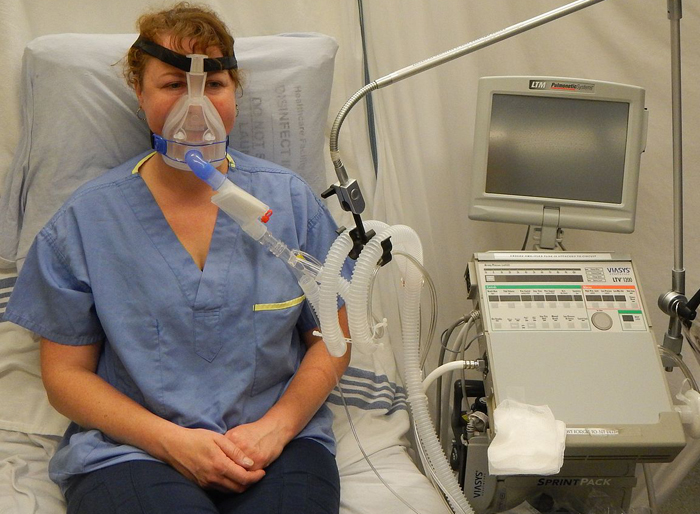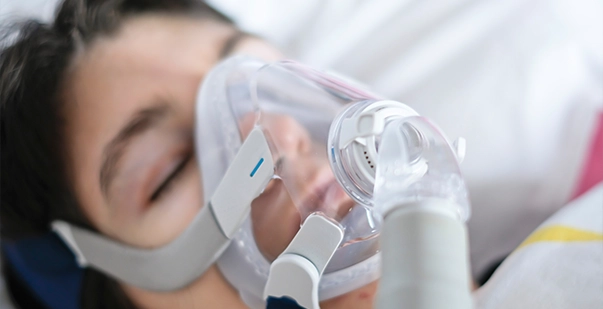Save Cash with Convenient BiPAP Rental Strategies
Save Cash with Convenient BiPAP Rental Strategies
Blog Article
Bipap vs. CPAP: Which Is the very best for Your Sleep Disorder?
When navigating the intricacies of sleep conditions, the option between BiPAP and CPAP treatment is a critical consideration. Each method supplies one-of-a-kind advantages customized to certain conditions, yet the choice depends upon individual patient needs and comfort levels. While CPAP supplies a stable airflow suitable for obstructive rest apnea, BiPAP's twin stress setups might improve comfort for those with more complex respiratory problems. Comprehending these distinctions can substantially influence treatment effectiveness, leaving one to ponder which alternative absolutely aligns with their wellness needs and way of living.
Understanding Sleep Disorders
Rest problems include a range of problems that interrupt normal sleep patterns, affecting both the high quality and period of rest. These disorders can show up in various kinds, consisting of sleep problems, sleep apnea, narcolepsy, troubled leg syndrome, and parasomnias. Each condition provides distinct obstacles, often bring about significant daytime fatigue, cognitive disability, and emotional disruptions.
Sleep problems is characterized by trouble falling or staying asleep, while rest apnea involves repeated disturbances in breathing throughout sleep, commonly causing fragmented remainder. Narcolepsy, on the various other hand, is marked by extreme daytime drowsiness and unexpected rest assaults. Uneasy leg syndrome triggers awkward experiences in the legs, prompting an uncontrollable impulse to move them, which can also hinder the capacity to drop off to sleep.
The impact of sleep problems expands past specific wellness, affecting total performance, connections, and top quality of life. Understanding the specific nature of each disorder is important for effective medical diagnosis and therapy. As sleep health and wellness comes to be progressively acknowledged as a crucial element of overall wellness, addressing these disorders is important for improving both rest high quality and everyday functioning.
Exactly How CPAP Works
Continual Positive Airway Stress (CPAP) treatment is often employed as a main treatment for obstructive rest apnea (OSA) The system of CPAP entails the use of a device that delivers a consistent stream of air through a mask used throughout sleep. This air flow preserves favorable stress in the airway, stopping the collapse or obstruction of the throat that can occur throughout rest.
When a patient takes in, the CPAP device provides a continual flow of air, making certain that the air passage stays open - BiPAP Rental. This not only eases the signs and symptoms of OSA, such as snoring and interfered with sleep patterns, yet likewise decreases the connected health dangers, including cardiovascular complications and daytime tiredness
The pressure setups on a CPAP machine can be customized to fulfill individual client demands, typically figured out via a rest study. Clients commonly undertake titration studies to find the optimal stress level for their special problem. Normal follow-up and changes may be essential to make certain effectiveness and comfort. Overall, CPAP treatment has been revealed to significantly enhance the quality of sleep and total wellness for individuals dealing with obstructive rest apnea.
How BiPAP Functions
BiPAP, or Bilevel Positive Respiratory Tract Stress, is a specialized type of non-invasive air flow that is particularly useful for people with problems such as complex sleep apnea or respiratory disorders. Unlike CPAP, which supplies a continual stream of air at a single pressure, BiPAP supplies 2 distinct stress settings: a higher inspiratory stress for breathing and a lower expiratory pressure for exhalation. This dual-pressure method permits less complicated breathing, reducing the effort required throughout exhalation.
The device operates with a mask fitted over the nose or mouth, attached to a device that produces air stress. When the client inhales, the device supplies the higher stress to assist with air flow, ensuring Discover More Here that the respiratory tract remains open. Upon exhalation, the machine automatically lowers the stress, making it much more comfortable for the patient to take a breath out.

Secret Distinctions In Between BiPAP and CPAP

In contrast, BiPAP (Bilevel Favorable Respiratory tract Pressure) offers 2 different stress settings: one for inhalation and a reduced one for exhalation. This dual stress system enables more comfy breathing, especially for individuals who fight with breathing out versus a constant pressure. BiPAP is usually suggested for clients with intricate rest apnea, chronic obstructive pulmonary illness (COPD), or those who need additional assistance during sleep.
Additionally, the complexity of BiPAP gadgets normally results in a higher cost and calls for extra cautious titration than CPAP. BiPAP Rental. Recognizing these crucial differences can help in acknowledging which gadget may be preferable for specific sleep problems, establishing the groundwork for informed treatment choices
Choosing the Right Therapy
How can one identify one of the most ideal treatment for handling rest conditions? The choice between BiPAP and CPAP treatment mostly depends upon the certain characteristics of the sleep condition, the person's overall wellness, and their comfort with the gadget. CPAP, which delivers a continuous stream of air, is commonly recommended for obstructive sleep apnea (OSA) It preserves an open airway during sleep, efficiently avoiding apneas and hypopneas.
Conversely, BiPAP provides two degrees of pressure: one for breathing and a reduced one for exhalation. This dual pressure system is advantageous for clients with complex sleep apnea or those that experience trouble breathing out versus a constant pressure. In addition, navigate to this site BiPAP is usually suggested for people with respiratory system conditions, such as persistent obstructive pulmonary condition (COPD), where varying pressure setups can enhance comfort and conformity.
Inevitably, a thorough examination by a sleep specialist, including a sleep study, can aid figure out which therapy straightens finest with the person's requirements. Elements such as convenience, convenience of usage, and details medical conditions ought to also be taken right into factor to consider to optimize treatment results.
Final Thought
In summary, both BiPAP and CPAP offer distinctive purposes in the management of sleep problems. CPAP works for obstructive rest apnea with constant air flow, while BiPAP supplies dual stress setups that enhance comfort for those with complicated sleep apnea or respiratory problems. The choice between these therapies must be assisted by specific demands and conditions, demanding a detailed analysis by a rest specialist to make certain optimum treatment outcomes and boosted high quality of rest.

In general, CPAP therapy has been revealed to significantly boost the top quality of sleep and general wellness for individuals suffering from obstructive rest apnea.
BiPAP is often recommended for individuals with intricate rest apnea, persistent obstructive lung disease (COPD), or those that need extra support during sleep.
CPAP is efficient for obstructive sleep apnea through consistent air flow, while BiPAP uses twin pressure settings that improve comfort for those with intricate rest apnea or respiratory system problems.
Report this page